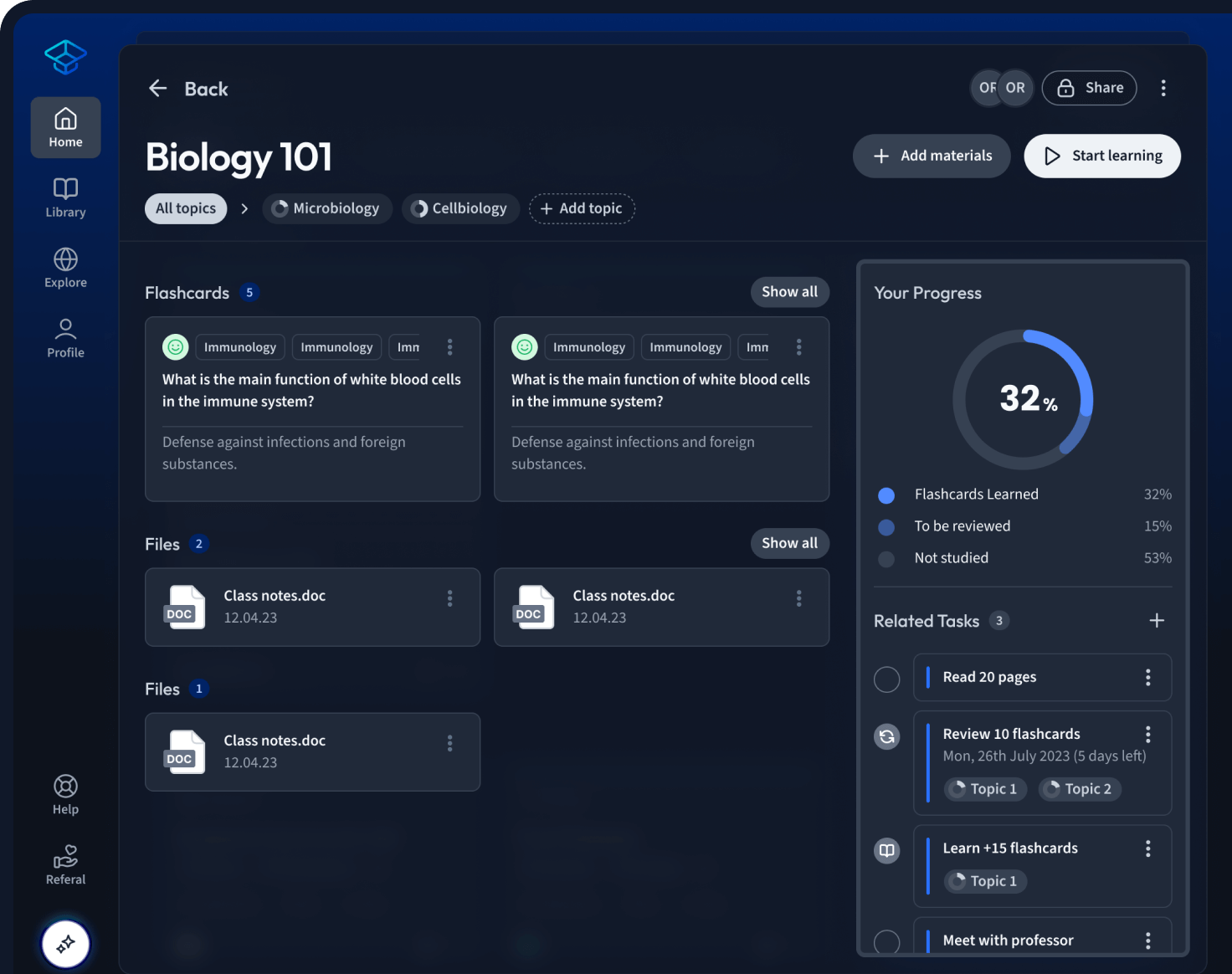Chapter 5: Introduction to Systems and Phase Plane Analysis
Q2E
Determine the equations of motion for the two masses described in Problem \({\bf{1}}\)if\({{\bf{m}}_{\bf{1}}}{\bf{ = 1\;kg,}}{{\bf{m}}_{\bf{2}}}{\bf{ = 1\;kg}}\),\({{\bf{k}}_{\bf{1}}}{\bf{ = 3\;N/m}}\), and\({{\bf{k}}_{\bf{2}}}{\bf{ = 2\;N/m}}\).
Q2RP
Find a general solution \({\bf{x}}\left( {\bf{t}} \right){\bf{, y}}\left( {\bf{t}} \right)\) for the given system.
\(\begin{array}{l}{\bf{x' = x + 2y }}\\{\bf{y' = - 4x - 3y}}\end{array}\)
Q30E
A proof of Theorem 1, page 266, is outlined below. The goal is to show that\({\bf{f(}}{{\bf{x}}^{\bf{*}}}{\bf{,}}{{\bf{y}}^{\bf{*}}}{\bf{) = g(}}{{\bf{x}}^{\bf{*}}}{\bf{,}}{{\bf{y}}^{\bf{*}}}{\bf{) = 0}}\). Justify each step
- From the given hypotheses, deduce that\(\mathop {\lim }\limits_{t \to \infty } {\bf{x'(t) = f(}}{{\bf{x}}^{\bf{*}}}{\bf{,}}{{\bf{y}}^{\bf{*}}}{\bf{)}}\) and\(\mathop {\lim }\limits_{t \to \infty } {\bf{y'(t) = g(}}{{\bf{x}}^{\bf{*}}}{\bf{,}}{{\bf{y}}^{\bf{*}}}{\bf{)}}\).
- Suppose\({\bf{f(}}{{\bf{x}}^{\bf{*}}}{\bf{,}}{{\bf{y}}^{\bf{*}}}{\bf{) > 0}}\). Then, by continuity,\({\bf{x'(t) = }}\frac{{{\bf{f(}}{{\bf{x}}^{\bf{*}}}{\bf{,}}{{\bf{y}}^{\bf{*}}}{\bf{)}}}}{{\bf{2}}}\)for all large t(say, for\({\bf{t}} \ge {\bf{T}}\)). Deduce from this that\({\bf{x(t) > }}\frac{{{\bf{tf(}}{{\bf{x}}^{\bf{*}}}{\bf{,}}{{\bf{y}}^{\bf{*}}}{\bf{)}}}}{{\bf{2}}}{\bf{ + C}}\)fort>I, where Cis some constant.
- Conclude from part (b) that\(\mathop {\lim }\limits_{t \to \infty } {\bf{x(t)}} = + \infty \), contradicting the fact that this limit is the finite number x*. Thus, f(x*, y*) cannot be positive.
- Argue similarly that the supposition thatf(x*, y*) < 0 also leads to a contradiction; hence,f(x*, y*) must be zero.
In the same manner, argue that g(x*, y*) must bezero. Therefore, f(x*, y*) = g(x*, y*) = 0, and (x*, y*) isa critical point.
Q30E
In Problems 29 and 30, determine the range of values (if any) of the parameter that will ensure all solutions x(t), and y(t) of the given system remain bounded as .
Q31E
Two large tanks, each holding 100 L of liquid, are interconnected by pipes, with the liquid flowing from tank A into tank B at a rate of 3 L/min and from B into A at a rate of 1 L/min (see Figure 5.2). The liquid inside each tank is kept well stirred. A brine solution with a concentration of 0.2 kg/L of salt flows into tank A at a rate of 6 L/min. The (diluted) solution flows out of the system from tank A at 4 L/min and from tank B at 2 L/min. If, initially, tank A contains pure water and tank B contains 20 kg of salt, determine the mass of salt in each tank at a time .

Q31E
Phase plane analysis provides a quick derivation of the energy integral lemma of Section 4.8 (page 201). By completing the following steps, prove that solutions of equations of the special form \({\bf{y'' = f(y)}}\) satisfy\(\frac{{\bf{1}}}{{\bf{2}}}{{\bf{(y')}}^{\bf{2}}}{\bf{ - F(y) = constant}}\)
where F(y) is an antiderivative of f(y).
- Set v = y’ and write \({\bf{y'' = f(y)}}\) as an equivalent first-order system.
- Show that the solutions to the vy-phase plane equation for the system in part.
- Satisfy\(\frac{{{{\bf{v}}^{\bf{2}}}}}{{\bf{2}}}{\bf{ = F(y) + K}}\). Replacing v by y’ then completes the proof.
Q32E
Use the result of Problem 31 to prove that all solutions to the equation\({\bf{y'' + }}{{\bf{y}}^{\bf{3}}}{\bf{ = 0}}\)remain bounded. [Hint: Argue that \(\frac{{{{\bf{y}}^{\bf{4}}}}}{{\bf{4}}}\) is bounded above by the constant appearing in Problem 31.]
Q32E
In Problem 31, 3 L/min of liquid flowed from tank A into tank B and 1 L/min from B to A. Determine the mass of salt in each tank at time if, instead, 5 L/min flows from A into B and 3 L/min flows from B into A, with all other data the same.
Q33E
A Problem of Current Interest. The motion of an ironbar attracted by the magnetic field produced by a parallel current wire and restrained by springs (see Figure 5.17) is governed by the equation\(\frac{{{{\bf{d}}^{\bf{2}}}{\bf{x}}}}{{{\bf{d}}{{\bf{t}}^{\bf{2}}}}}{\bf{ = - x + }}\frac{{\bf{1}}}{{{\bf{\lambda - x}}}}\) for \({\bf{ - }}{{\bf{x}}_{\bf{o}}}{\bf{ < x < \lambda }}\)where the constants \({{\bf{x}}_{\bf{o}}}\) and \({\bf{\lambda }}\) are, respectively, the distances from the bar to the wall and to the wire when thebar is at equilibrium (rest) with the current off.
- Setting\({\bf{v = }}\frac{{{\bf{dx}}}}{{{\bf{dt}}}}\), convert the second-order equation to an equivalent first-order system.
- Solve the related phase plane differential equation for the system in part (a) and thereby show that its solutions are given by\({\bf{v = \pm }}\sqrt {{\bf{C - }}{{\bf{x}}^{\bf{2}}}{\bf{ - 2ln(\lambda - x)}}} \), where C is a constant.
- Show that if \({\bf{\lambda < 2}}\) there are no critical points in the xy-phase plane, whereas if \({\bf{\lambda > 2}}\) there are two critical points. For the latter case, determine these critical points.
- Physically, the case \({\bf{\lambda < 2}}\)corresponds to a current so high that the magnetic attraction completely overpowers the spring. To gain insight into this, use software to plot the phase plane diagrams for the system when \({\bf{\lambda = 1}}\) and when\({\bf{\lambda = 3}}\).
- From your phase plane diagrams in part (d), describe the possible motions of the bar when \({\bf{\lambda = 1}}\) and when\({\bf{\lambda = 3}}\), under various initial conditions.
Q33E
In Problem 31, assume that no solution flows out of the system from tank B, only 1 L/min flows from A into B, and only 4 L/min of brine flows into the system at tank A, other data being the same. Determine the mass of salt in each tank at the time.
